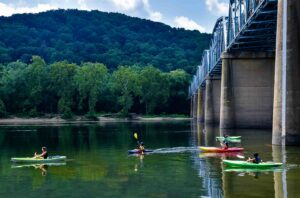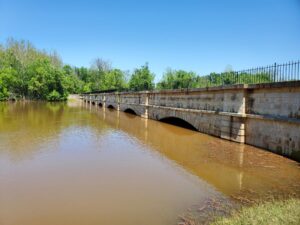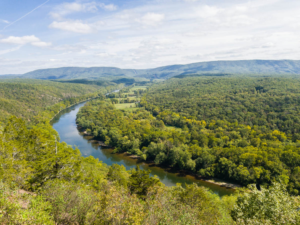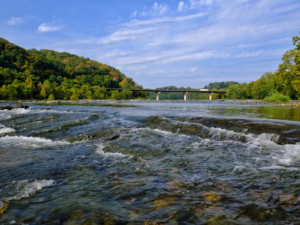As summer heats up, our canal community frequents the Potomac River to cool off and make the most of long, sunny days. Flowing through diverse landscapes and ecosystems, the Potomac River showcases natural wonders such as the rushing Mather Gorge and the languid stretches at Big Slackwater. Just as the river shapes the land, our land use impacts the health and quality of the Potomac. This Water Quality Month, we are highlighting the park’s vital role as a filtration system for the Potomac River, as well as how our choices influence the ecosystems we love.
The Potomac Conservancy scores the Potomac River’s health a “B” grade due to lingering pollution from urban and agricultural runoff, wastewater, and industrial waste. This marks a significant improvement from the “D” it received in 2011, but there is still room for growth. Runoff, a significant source of pollution, occurs when rainwater travels over surfaces, collecting pollutants before entering the river. Because it doesn’t have one source, runoff pollution can be challenging to manage. Contaminants like bacteria, fertilizers, sediment, trash, and oil find their way into rivers as a result. However, runoff can be reduced by vegetation adjacent to the river, also known as a riparian buffer.
In this case, the C&O Canal National Historical Park acts as a riparian buffer for the majority of the Potomac River’s Maryland border. Since the park’s
establishment, the regrowth of forests and riverside vegetation has helped slow, filter, and store water. The park’s riparian buffer provides incalculable benefits to us, considering that the Potomac supplies nearly 90% of the DC metro area’s drinking water. Without it, safe and clean drinking water would be more costly and time-consuming to produce.
Water quality is crucial for the natural resources within the C&O Canal. Plants and wildlife rely on clean water to thrive in ecosystems across the park. By altering our agricultural practices, restoring native ecosystems and trees, and protecting healthy streams, we can help improve the health of the Potomac River and create a safer park for recreation, relaxation, and learning.




